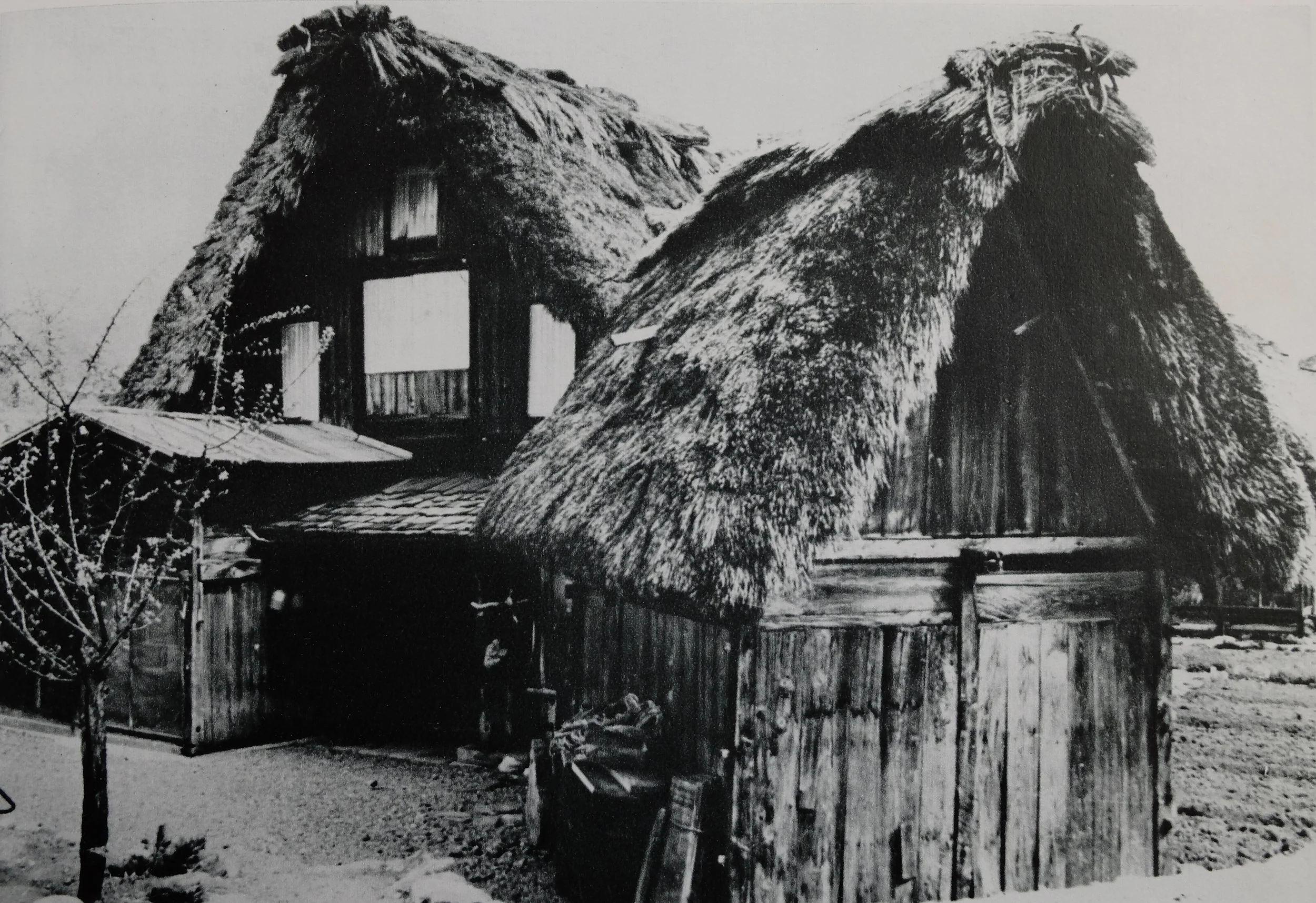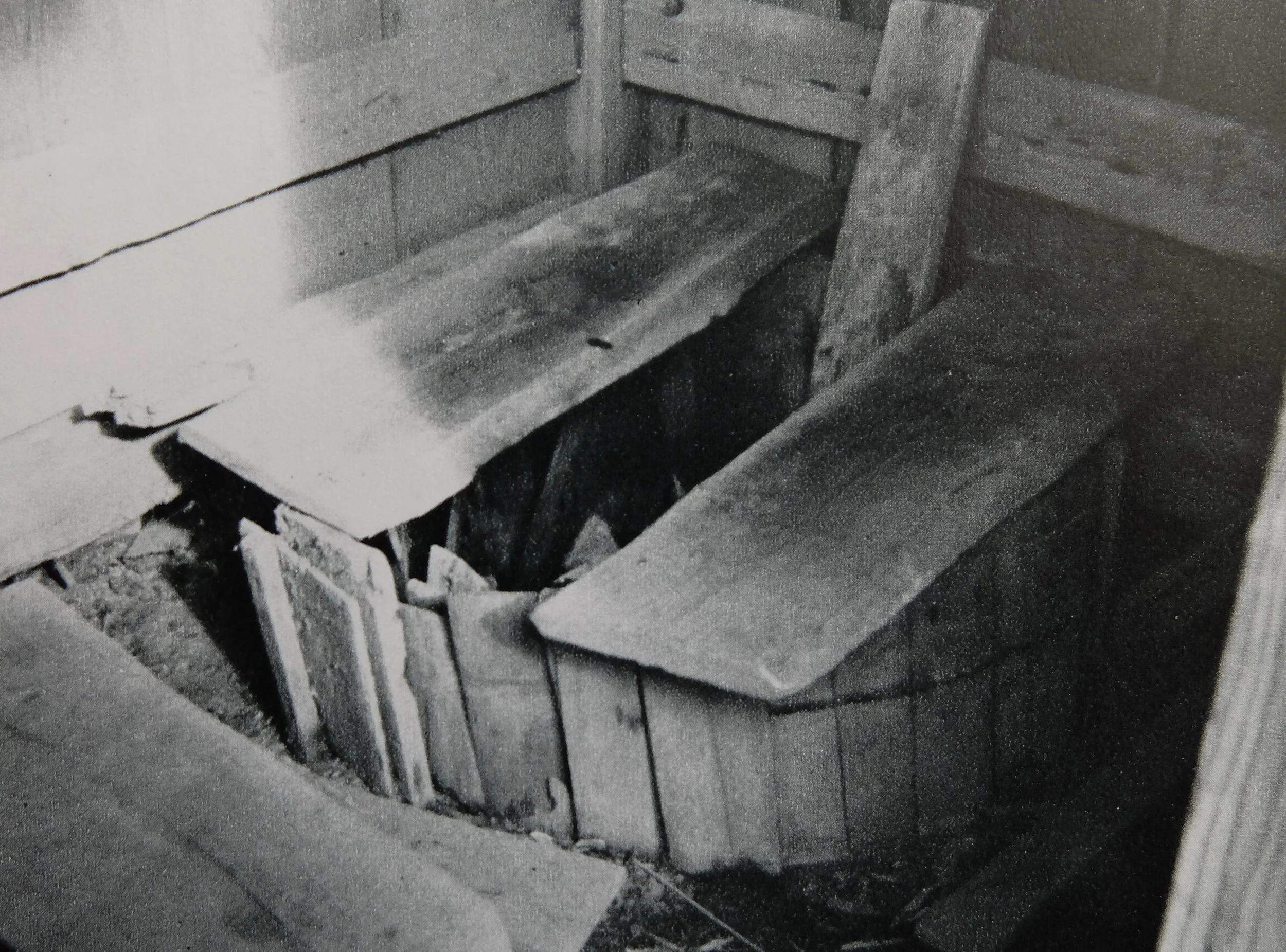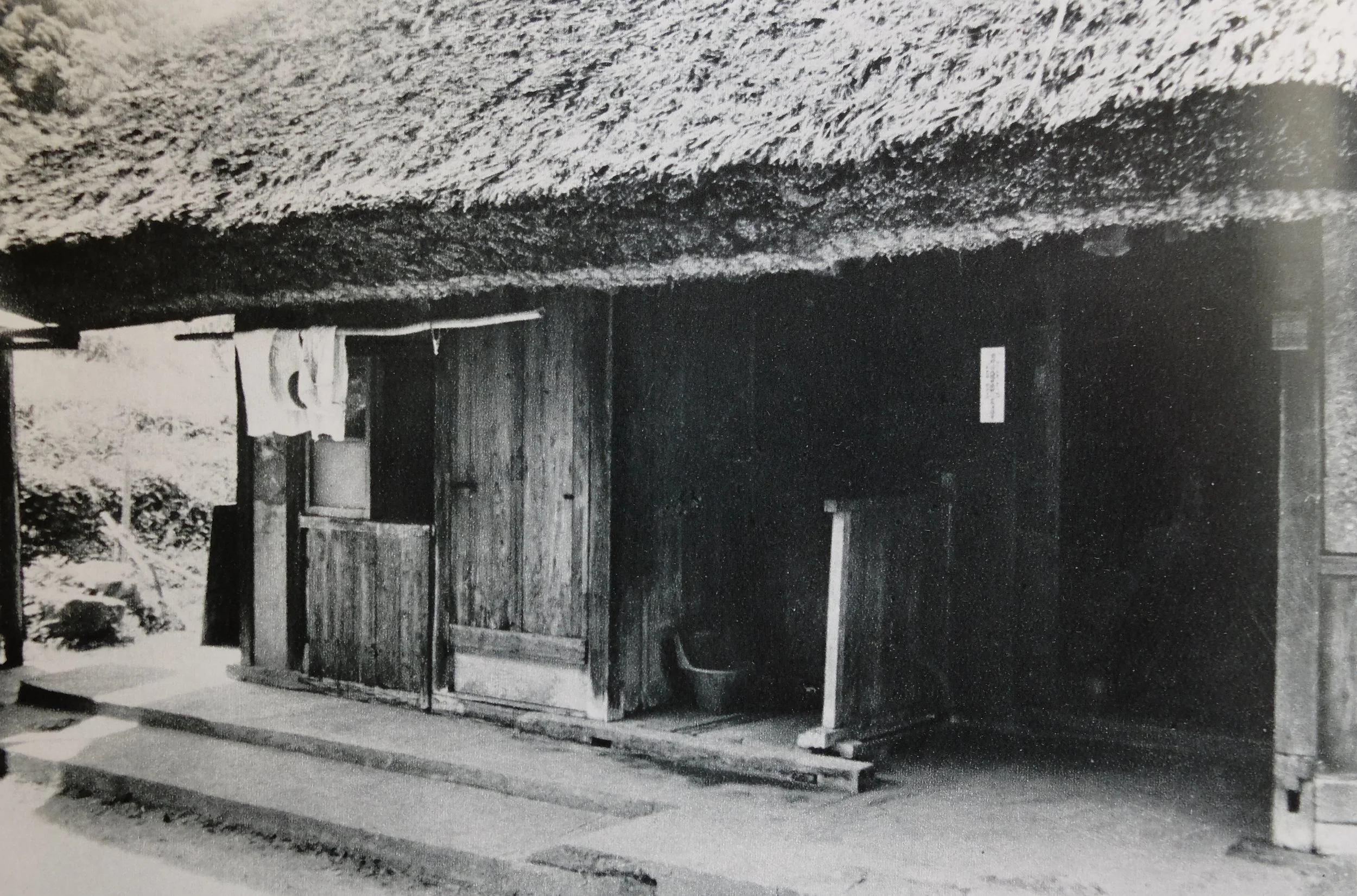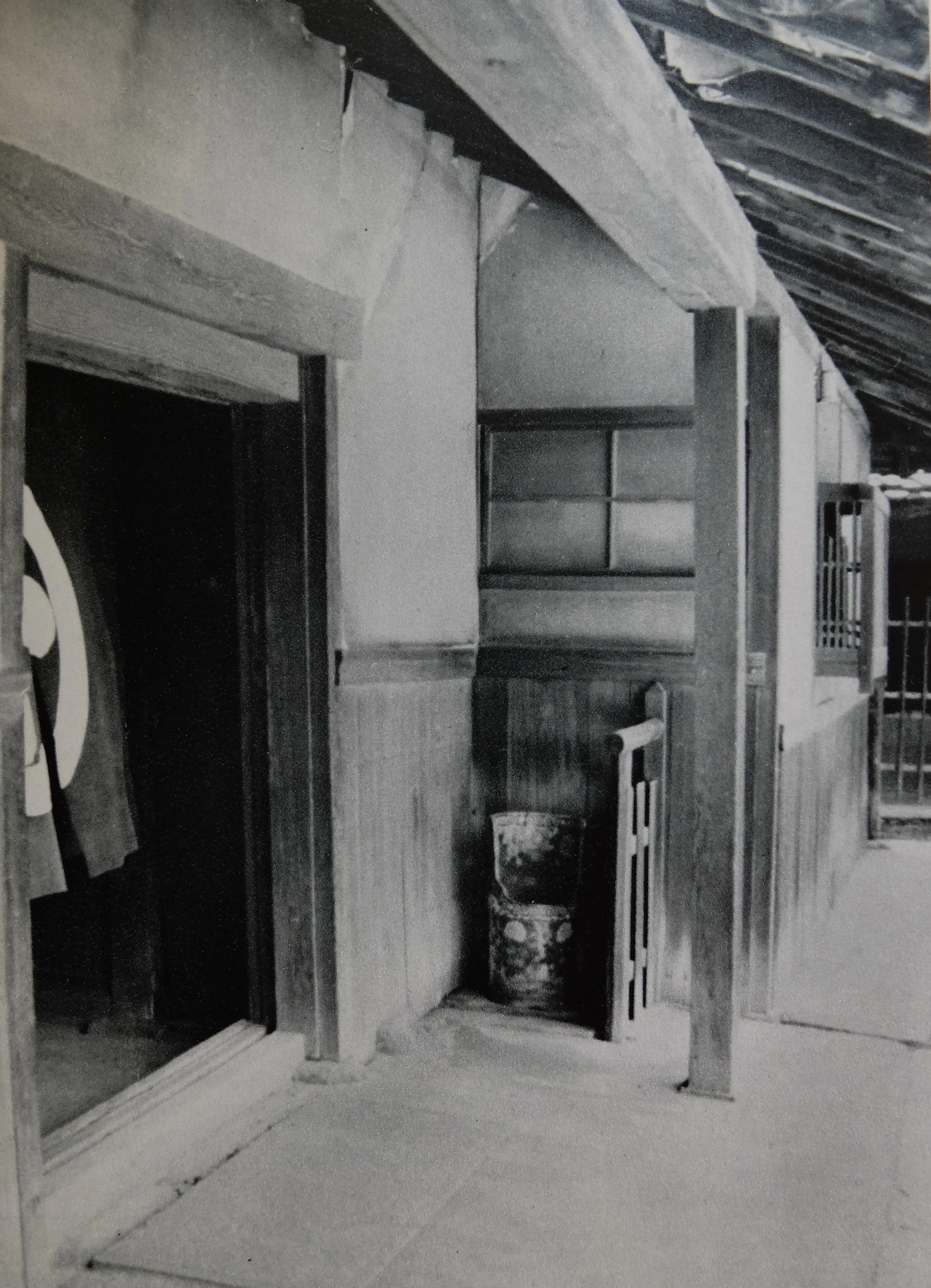In Hida (飛騨), now northern Gifu Prefecture, there were detached ‘outhouse’ (bettо̄-benjo (別棟便所, lit. ‘separate ridge toilet’) toilets called henchiya (へんちや), in which a large tub (о̄-oke 大桶) of around two metres in diameter is half-buried and secured with red clay around its perimeter, with two boards called ‘pot boards’ (tsubo-ita 壷板) spanning the opening; these toilets were big enough that multiple people could relieve themselves at the same time.
Exterior view of a large henchiya outhouse (bettо̄-benjo (別棟便所) in front its associated minka in Shirakawa-gо̄ (白川郷), Gifu Prefecture.
Toilets in the Totsukawa (十津川) area of Nara Prefecture and elsewhere are of the same type, and though their tubs are smaller than those of Hida henchiya, it can be seen from the image below that their use at night by those unfamiliar with them could be perilous.
The interior of an outhouse (bettо̄-benjo (別棟便所), consisting of a half-buried large tub (о̄-oke 大桶) spanned by two boards. Ibaraki Prefecture.
There are regions, like Hida, where the toilet is located in a separate structure, called the seya (背屋 ‘back hut’) or to (外 ‘outside’), and there are many regions where the toilet is attached to the south side of the house, for fertiliser-related reasons discussed in the previous series of posts on minka bathrooms. There are also places where the toilet is located near the rear entrance or ‘back door’ (sedo-guchi 背戸口), under the eaves (noki-shita 軒下), or at one end of a storage building (naya 納屋) or gatehouse (nagaya-mon 長屋門).
A urinal (shо̄-benjo 小便所) was often installed beside the main entrance (to-guchi 戸口), with a low wall (sode-gaki 袖垣) built next to it to provide some privacy. This location was most likely chosen for convenience, in consideration for high-frequency use and nocturnal visits, but there may also have been the motive of relieving visitors of their load of urine for use as fertiliser on one’s own fields.
Exterior view of a minka showing ‘entry toilet’ (toguchi-benjo 戸口便所), centre, and bathroom (yoku-shitsu 浴室), left. The urinal is a porcelain (tо̄sei 陶製) ‘morning glory’ type (asagao-kata 朝顔型). Kyо̄to Prefecture.
A porcelain mukо̄-daka (向高) style urinal next to the entrance (kado-guchi 門口) of the residence of a local official (о̄shо̄ya 大圧屋). Okuda residence (Okuda-tei 奥田低), an Important Cultural Property, О̄saka Prefecture.
In cold regions, the urinal would be put inside, in a corner of the earth-floored utility area (doma 土間) or beside the stable (umaya 厩), where human waste products and livestock excreta alike were used as fertiliser. There were also regions where people relieved themselves into tawara (俵), straw ‘barrels’ usually used for storing rice and other consumables. Tawara containing ash and chopped straw (kiri-wara 切藁) were kept in a corner of the doma; in spring the filled tawara were used as compost (taihi 堆肥 ‘pile manure’). These toilets were called shonbe-suma (しょんべすま, perhaps ‘urine corner’) or aku-ba (あくば, perhaps ‘scum place’).
Tawara stacked on a hand-cart.




